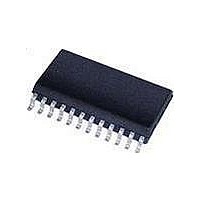PCK351D NXP Semiconductors, PCK351D Datasheet - Page 14

PCK351D
Manufacturer Part Number
PCK351D
Description
Clock Buffer 1:10 CLK DISTR DEV 3-ST OUTPUT
Manufacturer
NXP Semiconductors
Datasheet
1.PCK351D112.pdf
(18 pages)
Specifications of PCK351D
Number Of Outputs
10
Propagation Delay (max)
4.1 ns
Supply Voltage (max)
3.6 V
Supply Voltage (min)
3 V
Maximum Power Dissipation
650 mW
Maximum Operating Temperature
+ 85 C
Minimum Operating Temperature
- 40 C
Mounting Style
SMD/SMT
Package / Case
SO-24
Operating Supply Voltage (max)
3.6V
Operating Temp Range
-40C to 85C
Propagation Delay Time
6.3ns
Operating Supply Voltage (min)
3V
Mounting
Surface Mount
Pin Count
24
Operating Supply Voltage (typ)
3.3V
Package Type
SO
Quiescent Current
25mA
Power Dissipation
650mW
Operating Temperature Classification
Industrial
Lead Free Status / RoHS Status
Lead free / RoHS Compliant
Other names
PCK351D,112
Available stocks
Company
Part Number
Manufacturer
Quantity
Price
Company:
Part Number:
PCK351DB,112
Manufacturer:
Maxim
Quantity:
49
Philips Semiconductors
13. Soldering
PCK351_2
Product data sheet
13.1 Introduction to soldering surface mount packages
13.2 Reflow soldering
13.3 Wave soldering
This text gives a very brief insight to a complex technology. A more in-depth account of
soldering ICs can be found in our Data Handbook IC26; Integrated Circuit Packages
(document order number 9398 652 90011).
There is no soldering method that is ideal for all surface mount IC packages. Wave
soldering can still be used for certain surface mount ICs, but it is not suitable for fine pitch
SMDs. In these situations reflow soldering is recommended.
Reflow soldering requires solder paste (a suspension of fine solder particles, flux and
binding agent) to be applied to the printed-circuit board by screen printing, stencilling or
pressure-syringe dispensing before package placement. Driven by legislation and
environmental forces the worldwide use of lead-free solder pastes is increasing.
Several methods exist for reflowing; for example, convection or convection/infrared
heating in a conveyor type oven. Throughput times (preheating, soldering and cooling)
vary between 100 seconds and 200 seconds depending on heating method.
Typical reflow peak temperatures range from 215 C to 270 C depending on solder paste
material. The top-surface temperature of the packages should preferably be kept:
Moisture sensitivity precautions, as indicated on packing, must be respected at all times.
Conventional single wave soldering is not recommended for surface mount devices
(SMDs) or printed-circuit boards with a high component density, as solder bridging and
non-wetting can present major problems.
To overcome these problems the double-wave soldering method was specifically
developed.
If wave soldering is used the following conditions must be observed for optimal results:
•
•
•
•
below 225 C (SnPb process) or below 245 C (Pb-free process)
– for all BGA, HTSSON..T and SSOP..T packages
– for packages with a thickness
– for packages with a thickness < 2.5 mm and a volume
below 240 C (SnPb process) or below 260 C (Pb-free process) for packages with a
thickness < 2.5 mm and a volume < 350 mm
Use a double-wave soldering method comprising a turbulent wave with high upward
pressure followed by a smooth laminar wave.
For packages with leads on two sides and a pitch (e):
– larger than or equal to 1.27 mm, the footprint longitudinal axis is preferred to be
thick/large packages.
parallel to the transport direction of the printed-circuit board;
Rev. 02 — 16 December 2005
1 : 10 clock distribution device with 3-state outputs
2.5 mm
3
so called small/thin packages.
© Koninklijke Philips Electronics N.V. 2005. All rights reserved.
350 mm
3
PCK351
so called
14 of 18














